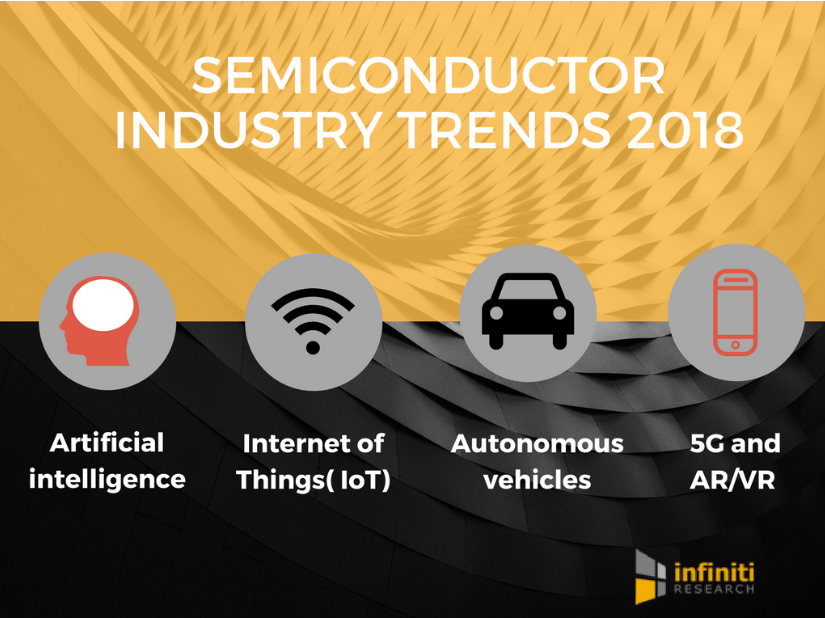By Aalyia Shaukat, contributing writer
Global semiconductor revenue is expected to rise by 7% (year over year) in 2018, according to the World Semiconductor Trade Statistics (or WSTS). And, while the semiconductor industry has enjoyed consistent growth over the decades, the underlying ICs that power modern technology have evolved. Infiniti Research recently released a blog summarizing the four major contributors to the growth in the semiconductor industry: artificial intelligence (AI), the Internet of Things (IoT) revolution, Level 3 autonomous vehicles, and high-throughput technologies such as 5G and augmented/virtual reality (AR/VR). These developments are driving increased demand across the semiconductor segments, particularly for processors, sensors and analog ICs.

Artificial intelligence
The mass fabrication of AI chips is rising on a global scale, from China’s Ministry of Industry and Information Technology’s plan to mass-produce neural-network processing chips by 2020 to IBM Watson Group’s $200 million investment for a facility in Munich. AI functionality for data processing, linguistic analytics, speech recognition, and image recognition is already being utilized in a wide array of industries. Qualcomm recently released two AI chips to target IoT vision applications that leverage its native AI engine. Apple and Samsung have already introduced AI functionality to smartphones for facial recognition, voice commands, and image-processing. Chinese firms such as Tsinghua, Horizon Robotics, and Huawei also have released AI chips for various applications. This inevitable boom in the production of chips designed for AI-specific tasks will directly grow the global semiconductor industry.
IoT
Related to the trend in AI, the IoT revolution in wirelessly connected sensor/actuator nodes for home automation, industrial, medical, and various commercial applications will also feed into the growth of the semiconductor industry. According to Ericsson , there will be more connected short-range IoT devices than mobile phones by 2022. With a high compound annual growth (CAGR) of 20% for short-range IoT and 30% for wide-area IoT, there is a steady demand for the fabrication chips for IoT applications.
Autonomous vehicles
The Infiniti Research blog notes that several Level 3 autonomous platforms are expected to be released in the near future. Level 3 autonomous vehicles will be equipped with neural processing chips that allow a driver to safely turn their attention away from driving but still be available to operate the vehicle. Some examples include Google’s Waymo ride-sharing service as well as Tesla and Toyota with Nvidia’s Drive PX 2 platform. These Level 3 autonomous vehicles will often be driven by multiple high-performance AI processors.
5G and AR/VR technologies
Major telecommunications companies, together with mobile phone device manufacturers, are ramping up to release 5G capabilities. With the recent 3GPP release of the 5G new radio (NR) specifications, a number of 5G chipsets are gearing up for production manufacturing. Bandwidth-intensive applications such as high-resolution video streaming and AR/VR are driving the IC evolution as video streaming now accounts for 70% of broadband data usage, and that is only expected to rise rapidly.
Advertisement
Learn more about Electronic Products Magazine





